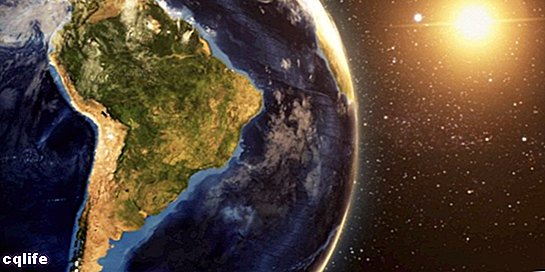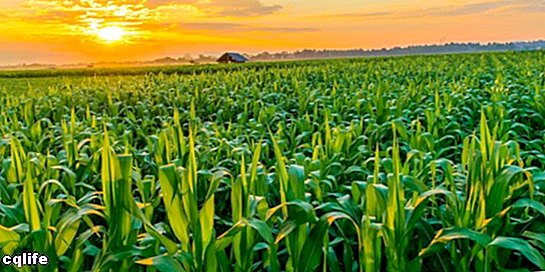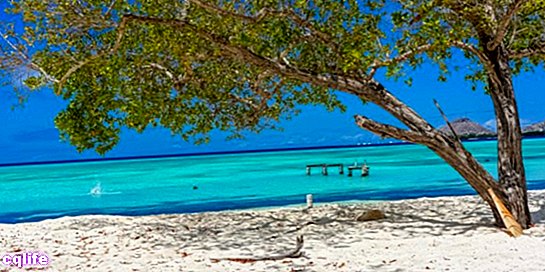- What is South America?
- Countries of South America and their capitals
- Most populated cities in South America
- South America Economy
- Climates of South America
We explain what South America is, the countries that make up this region and their capitals. In addition, its economy and the climates it presents.

What is South America?
When speaking of South America, South America or South America, allusion is made to the region of this continent that runs from the equator downward, and that constitutes a single subcontinental block distinct from North America, Central America, and the Caribbean Islands.
South America is located between the Atlantic Ocean to the east, the Pacific Ocean to the west, the Caribbean Sea to the north and the ocean Antarctic to the south. Its total area is 18.2 million square kilometers, equivalent to 49% of America all and 13% of the world continental surface, also housing 6.5% of the population world total, in a set of twelve countries. The latter are organized into three large geographic-cultural regions: the South American Caribbean, the Southern Cone and the South American Andean region.
Culturally speaking, South America is predominantly Hispanic, that is, the result of the Spanish Empire's colonization of American lands, with the exception of Brazil, a former colony (and later kingdom) of Portugal, and British Guyana, French Guyana, and Suriname. , former colonies of the British Empire and the Kingdom of France. Some geographical perspectives also include the islands of Trinidad and Tobago (former English colony) and Aruba, Curaçao and Bonaire (former colonies of the Netherlands).
Before the Spanish conquest of the continent, South America was the scene of various cultures pre-Columbian, among which the Charrúas, Tiahuanacos, Paracas, Nazcas, Mochicas, Tehuelches, Arahuacos and especially the Incas, who founded one of the great American aboriginal empires, settled in the Andean region until their traumatic encounter with the conquerors in the 16th century.
Subsequently, the majority of the continent under Spanish rule was divided into three great viceroyalties: the Viceroyalty of New Granada, the Viceroyalty of Peru and the later Viceroyalty of Río de la Plata. During the 19th century, this territory was the scene of the bloody and long Wars of Independence, in which military heroes such as the Venezuelan Simón Bolívar or the Argentine José de San Martín played a key role, among many others. The South American countries achieved their independence from Spain at different dates in the 19th century, while Brazil did the same from Portugal in 1822.
Today South America is a subcontinent characterized by its enormous cultural, geographical and ethnic diversity, as well as by its unequal standards of living and economic production.
Countries of South America and their capitals
South America is made up of twelve countries, which are:
| Country | Capital |
|---|---|
| Argentina | Buenos Aires |
| Bolivia | Peace |
| Brazil | Brasilia |
| chili | Santiago |
| Colombia | Bogota |
| Ecuador | Quito |
| Guyana | Georgetown |
| Paraguay | Assumption |
| Peru | lime |
| Surinam | Paramaribo |
| Uruguay | Montevideo |
| Venezuela | Caracas |
Most populated cities in South America

The most populated cities in South America are:
- São Paolo (Brazil). With 22,672,582 inhabitants in 2010.
- Buenos Aires, Argentina). With 10,875,587 inhabitants in 2007.
- Rio de Janeiro Brazil). With 10,838,752 inhabitants in 2010.
- Lima Peru). With 9,283,771 inhabitants in 2005.
- Bogota Colombia). With 10,555,058 inhabitants in 2008.
- Santiago, Chile). With 6,428,590 inhabitants in 2010.
- Belo Horizonte (Brazil). With 4,035,194 inhabitants in 2008.
- Caracas Venezuela). With 3,923,959 inhabitants in 2011.
South America Economy

Argentina is one of the agricultural giants of South America.
South America presents a gigantic economic diversity, which in turn engenders models of life extremely different from each other and societies very disparate economically and socially.
On the one hand, there are agricultural giants such as Argentina, Brazil and, to a lesser extent, Paraguay, whose main export products are soybeans, oranges, sugar cane, coffee, yerba mate and lemon. On the other, the cattle raising In Uruguay and Argentina it is also an activity of considerable international dimensions.
Mining is another major economic activity on the subcontinent. The oil sector is divided between Venezuela, Ecuador and Colombia, the former being a world-scale oil producer with the largest oil reserves in the world. planet, while Bolivia subsists on the export of natural gas and, to a lesser extent, on Petroleum.
Finally, there is the Chilean case, the world's largest producer of copper, but also of lithium and iodine, or from Peru, the world's second largest producer of silver. Brazil and Venezuela are also large mining producers.
The sightseeing, the gastronomy and floriculture are secondary industries distributed in South America, as well as industrialized manufacturing activities in the Southern Cone and especially in Brazil, sixth economy of the world. South American countries have partnered with each other through Mercosur, an initiative of united local markets, founded in 1991.
Climates of South America

Another very diverse aspect of the South American subcontinent is its climates, which are divided into three large bands:
- Tropical or subequatorial. With temperatures warm, humidity and an enormous record of annual rainfall, especially in the coastal regions of the Venezuelan and Colombian Caribbean, as well as the Brazilian north, and the Pacific coasts of Ecuador and northern Peru. This climate continues to the south along theAmazon jungle, becoming more and more temperate. Some of the most humid regions of the planet are in this strip, like Chocó (Colombia, Ecuador and Peru).
- Temperate or intertropical. Present in the central regions of the Southern Cone (Argentina, Chile, Uruguay) and southern Brazil, it has a temperate climate that becomes Mediterranean towards the center of Chile. As one descends towards the Argentine or Chilean Patagonia, the climate becomes cold temperate, humid in the Andean mountain range and dry in the eastern zone.
- Mountain weather. Typical of the Andes mountain range, decreasing in temperature as the height increases, and presenting enormous thermal variations but drastic decrease in precipitation, as in the Andean Altiplano (northern Argentina, Bolivia and northern Chile).
